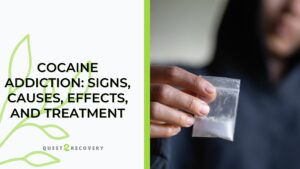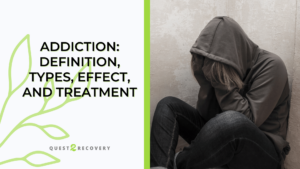The cost of inpatient rehab is a significant aspect to consider when seeking help for addiction. It’s important to have a clear understanding of the financial factors involved to make informed decisions. Whether you or a loved one is contemplating inpatient rehab, examining the elements that contribute to the overall cost and exploring options for financial assistance is essential.
By gaining insights into the financial considerations of inpatient rehab, you can navigate the path to recovery with greater awareness. Understanding the costs involved and exploring available financial assistance options can help alleviate concerns and ensure that individuals receive the necessary care without undue financial strain.
What is Inpatient Rehab?
Inpatient rehab is a kind of addiction treatment program that offers individuals a focused and structured path toward recovery. The concept involves staying at a specialized facility with trained mental health experts for a specific duration, typically ranging from a few weeks to several months.
Inpatient rehab is aimed at creating a supportive and therapeutic environment that empowers patients to address their substance abuse or mental health issues without the distractions of the outside world. During your stay in an inpatient rehab facility, you’ll receive a range of services aimed at addressing the multifaceted challenges of drug addiction.
Patients typically receive treatment options such as medically supervised detoxification, counseling, behavioral therapies, and educational programs. By residing in the facility, individuals can fully immerse themselves in an environment that is free from the external triggers and temptations that may hinder their recovery. This enables them to focus wholeheartedly on their healing journey.
Who Can Go to an Inpatient Rehab?
Inpatient rehab is open to individuals who are struggling with substance abuse or addiction and are seeking intensive treatment and support. It is typically available to adults of legal age, but there may also be specialized programs for adolescents or specific populations. Admission criteria can vary depending on the rehab facility and the specific treatment program.
What Factors Influence the Cost of Inpatient Rehab?
The cost of inpatient rehab can vary based on several factors. Here are some factors that can influence the cost:
- Duration of stay: The length of the inpatient rehab program can impact the overall cost. Longer stays generally incur higher costs compared to shorter programs.
- Location: The geographical location of the rehab facility can influence the cost. Facilities in urban areas or regions with a higher cost of living may have higher fees.
- Facility amenities: The amenities and services provided by the rehab facility can impact the cost. Facilities offering luxury accommodations, recreational activities, or additional services may have higher fees.
- Treatment program features: The specific elements included in the treatment program can affect the cost. Facilities offering specialized therapies, holistic approaches, or personalized treatment plans may have higher fees.
- Medical and detoxification services: If medical detoxification services or medical supervision are required during the rehab program, it can add to the overall cost.
- Staff expertise and credentials: Facilities that employ highly trained and experienced staff, including medical professionals, therapists, and counselors, may charge higher fees.
- Insurance coverage: The extent of insurance coverage or the availability of financial assistance options can influence the out-of-pocket cost for individuals.
Note that while the cost of inpatient rehab can be a significant consideration, the focus should primarily be on selecting a program that provides high-quality care and meets the specific needs of the individual seeking treatment.
How Much Does Inpatient Rehab Cost?
The cost of inpatient rehab can vary significantly depending on various factors, such as the duration of the program, the location of the facility, the amenities provided, and the specific features of the treatment program.
Depending on the factors mentioned earlier and the treatment center you choose, prices can range from several thousand dollars to tens of thousands of dollars. However, according to Drug Abuse Statistics, the current cost of adult residential treatment ranges between $4,008 and $15,524 on a single episode. In a private inpatient facility, you can expect to pay anywhere from $500 to $650 per day.
Why is Inpatient Rehab Expensive?
While the cost of inpatient rehab is usually considered the best for the level of service and attention you’ll receive, it can be relatively expensive for some patients due to several reasons, including:
1. 24/7 Care and Support
Inpatient rehab facilities provide round-the-clock care and support, which requires a significant staffing presence. The cost of employing a team of healthcare professionals, addiction specialists, therapists, counselors, and support staff contributes to the overall expense.
2. Facility Operations
Running an inpatient rehab facility involves various operational costs, including facility maintenance, utilities, overhead expenses, and administrative staff salaries. These costs are factored into the overall cost of treatment.
3. Comprehensive Services
Inpatient rehab programs typically offer a wide range of services to address the complex needs of individuals with substance abuse issues. These services may include medical detoxification, individual therapy, group therapy, behavioral therapies, educational programs, recreational activities, and aftercare planning. The costs associated with providing these comprehensive services contribute to the overall expense.
4. Specialized Staff and Expertise
Inpatient rehab facilities often employ highly trained and specialized professionals who have expertise in addiction treatment. These professionals may include medical doctors, psychiatrists, psychologists, addiction counselors, and therapists. The expertise and qualifications of the staff contribute to the cost of treatment.
5. Facility Amenities
Some inpatient rehab facilities offer additional amenities and comforts, such as private rooms, upscale accommodations, recreational facilities, and alternative therapies. These amenities come at an additional cost, contributing to the overall expense of the program.
6. Licensing and Accreditation
Reputable inpatient rehab facilities invest in obtaining proper licensing and accreditation, which ensures compliance with quality standards and regulations. The cost of maintaining these credentials is reflected in the overall cost of treatment.
Additionally, some facilities may offer financial assistance options or work with insurance providers to help individuals access the necessary treatment.
The Cost of Addiction Vs. The Cost of Rehab
Comparing the cost of addiction to the cost of rehab reveals significant differences for you:
The Cost of Addiction
- Addiction can result in substantial financial burdens for you over time.
- You may incur expenses from purchasing substances, dealing with legal issues, paying medical bills, and repairing damaged relationships.
- Addiction often leads to a decline in your productivity and job performance, putting you at risk of losing employment and experiencing a reduction in income.
- Long-term addiction can lead to chronic health issues, necessitating ongoing medical care and increasing your healthcare costs.
- The overall financial and emotional toll of addiction can be extensive, affecting multiple areas of your life.
The Cost of Rehab
- While inpatient rehab can be expensive, it is an investment in your health and well-being.
- The cost of rehab varies depending on factors such as the duration of the program, location, amenities, and specific treatment features.
- Your rehab costs can be partially or fully covered by insurance, and there may be financial assistance options available to help you access treatment.
- Compared to the long-term financial, physical, and emotional consequences of addiction, the cost of rehab is often a worthwhile investment in breaking the cycle of addiction and rebuilding a healthier life.
Overall, the cost of addiction can be substantial and wide-ranging, impacting various aspects of your life. While rehab may involve a financial commitment on your part, it offers you an opportunity to overcome addiction, improve your overall well-being, and potentially reduce long-term costs associated with addiction-related consequences.
What Treatment Options are Provided in Inpatient Rehab?
Inpatient rehab programs offer a comprehensive range of treatment options to address addiction and support individuals on their recovery journey. Some common treatment options provided in inpatient rehab include:
1. Medically Supervised Detoxification
Inpatient rehab programs often include a medically supervised detox phase, where individuals undergo withdrawal from substances in a safe and supportive environment. Medical professionals monitor individuals’ physical and psychological well-being to manage withdrawal symptoms and ensure a smooth transition to the next phase of treatment.
2. Individual Therapy
Inpatient rehab typically includes individual therapy sessions with trained therapists or counselors. These one-on-one sessions provide a confidential space for individuals to explore the underlying causes of their addiction, develop coping strategies, and work toward personal growth and healing.
3. Group Therapy
Group therapy is a key component of inpatient rehab. It involves individuals coming together in a supportive and structured setting to discuss their experiences, share insights, and provide mutual encouragement. Group therapy fosters a sense of community, belonging, and shared understanding among participants.
4. Behavioral Therapies
Inpatient rehab may incorporate various evidence-based behavioral therapies, such as Cognitive-Behavioral Therapy (CBT), Dialectical Behavior Therapy (DBT), or Motivational Interviewing (MI). These therapies help individuals identify and change negative thought patterns and behaviors associated with addiction, develop healthier coping skills, and enhance motivation for recovery.
5. Family Therapy
In recognition of the impact addiction can have on family dynamics, inpatient rehab programs often offer family therapy sessions. These sessions involve the participation of family members or loved ones to address communication issues, promote understanding, and provide support for the recovery process.
6. Holistic Therapies
Many inpatient rehab programs integrate holistic therapies to complement traditional treatment approaches. These may include activities such as art therapy, music therapy, yoga, mindfulness practices, and meditation. Holistic therapies aim to enhance overall well-being, promote self-expression, and provide additional tools for stress management and emotional healing.
7. Educational Programs
Inpatient rehab often includes educational components that provide individuals with knowledge about addiction, relapse prevention strategies, and life skills training. These programs equip individuals with the necessary tools and information to support their recovery journey beyond the rehab setting.
8. Aftercare Planning
Inpatient rehab programs typically assist individuals in developing aftercare plans to ensure continuity of care upon completion of the program. This may involve referrals to outpatient treatment, sober living arrangements, support groups, and ongoing therapy to maintain sobriety and prevent relapse.
It’s important to note that the specific treatment options provided in inpatient rehab can vary between facilities. Also, understand that some of these services are offered as standalone treatments for different levels of addiction and each has a specific cost associated with it.
How to Get Financial Assistance for Inpatient Rehab
Here are several steps to consider for obtaining financial assistance for inpatient rehab:
- Contact your insurance provider: Contact your health insurance provider to understand your coverage for addiction treatment and inquire about available financial assistance.
- Verify your eligibility for government programs: Check if you qualify for government assistance programs such as Medicaid or Medicare, which may provide coverage for addiction treatment.
- Research nonprofit organizations and grants: Explore nonprofit organizations and foundations that offer grants or financial assistance for addiction treatment. Research their requirements and application processes.
- Inquire about sliding scale fees: Ask rehab facilities if they offer reduced rates or payment plans based on your financial situation.
- Seek out local resources: Look for community health clinics, county or state-funded programs, and charitable organizations that provide financial assistance or sponsorships for addiction treatment.
- Speak with the rehab facility: Discuss your financial situation with the admissions staff at the rehab facility you’re considering and inquire about available financial assistance options.
- Consult with a financial counselor or social worker: Seek assistance from a financial counselor or social worker who specializes in addiction treatment to navigate the financial aspects and explore available resources.
Remember to be proactive, persistent, and thorough in your search for financial assistance. There are resources available to help individuals access the necessary funding for inpatient rehab.
Quest2Recovery Provides Inpatient Rehab
At Quest 2 Recovery, our California-based inpatient rehabilitation program is designed to empower you to take control of your recovery journey within a nurturing and comfortable environment. We specialize in identifying and addressing the root causes and triggers that drive substance use. By gaining insight into the thought patterns and behaviors that have fueled addiction, you’ll feel empowered and deeply committed to overcoming your dependence on drugs or alcohol. Nestled in a serene and secluded setting, far from the hustle and bustle of urban life, our facility provides a tranquil backdrop for healing your mind, rejuvenating your body, and revitalizing your spirit.









